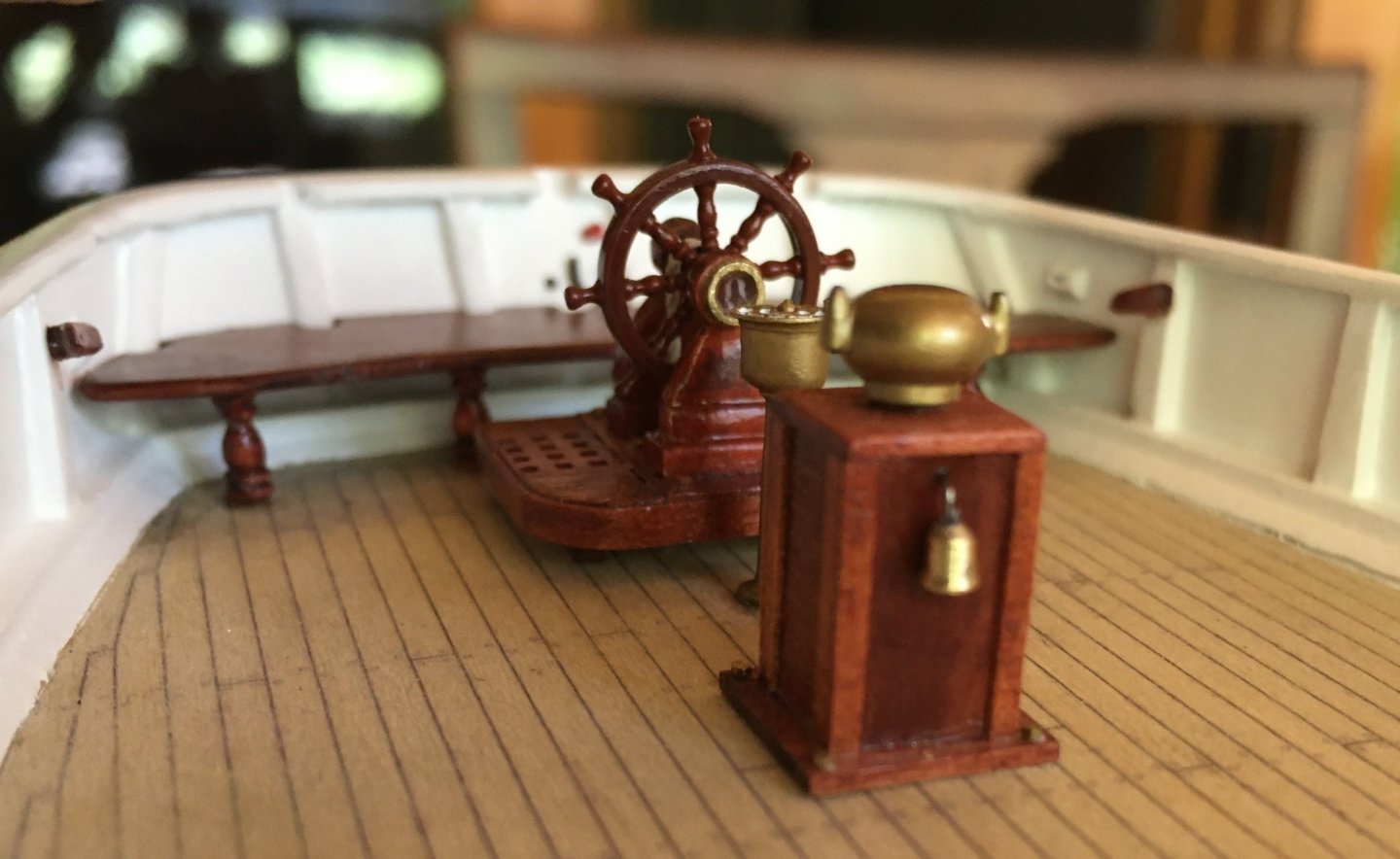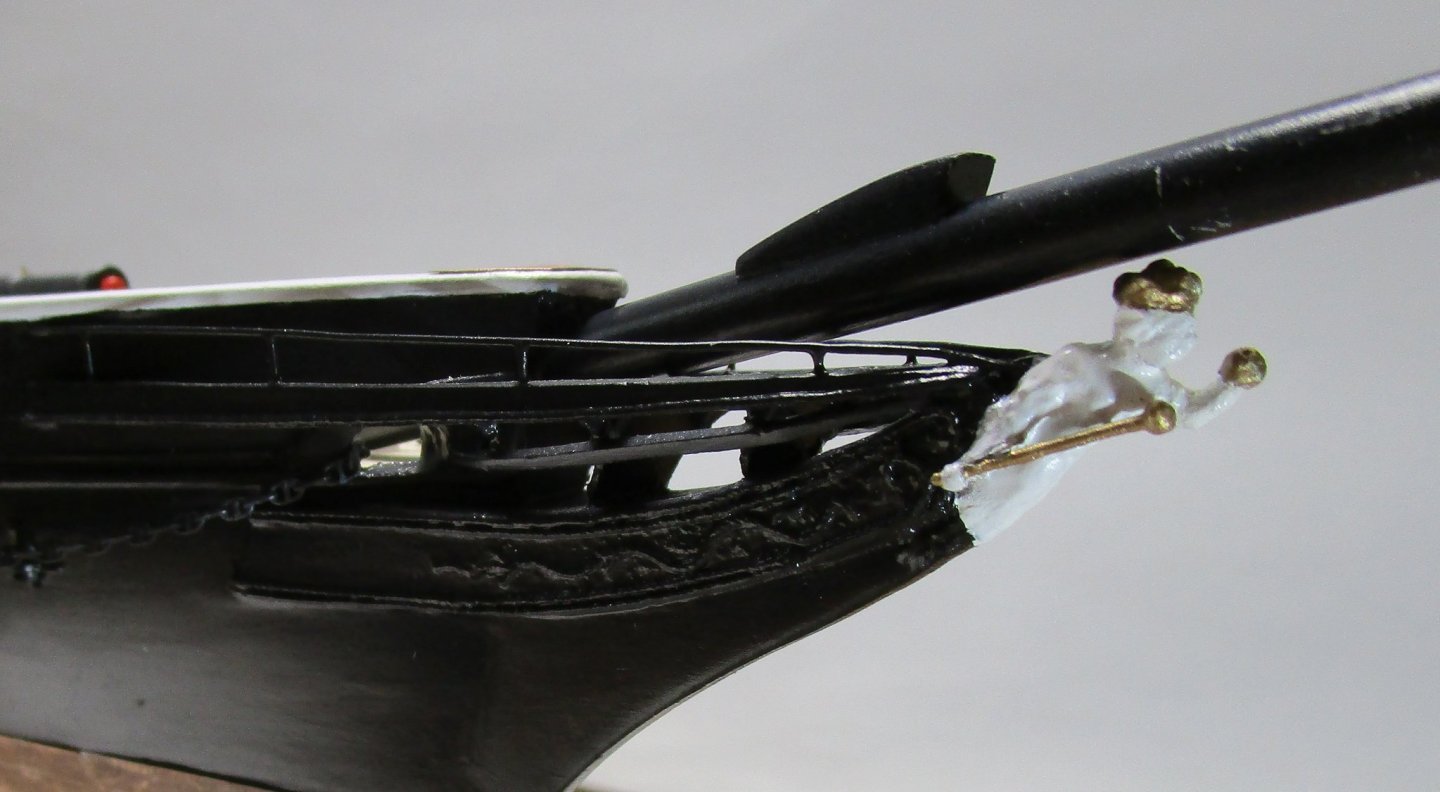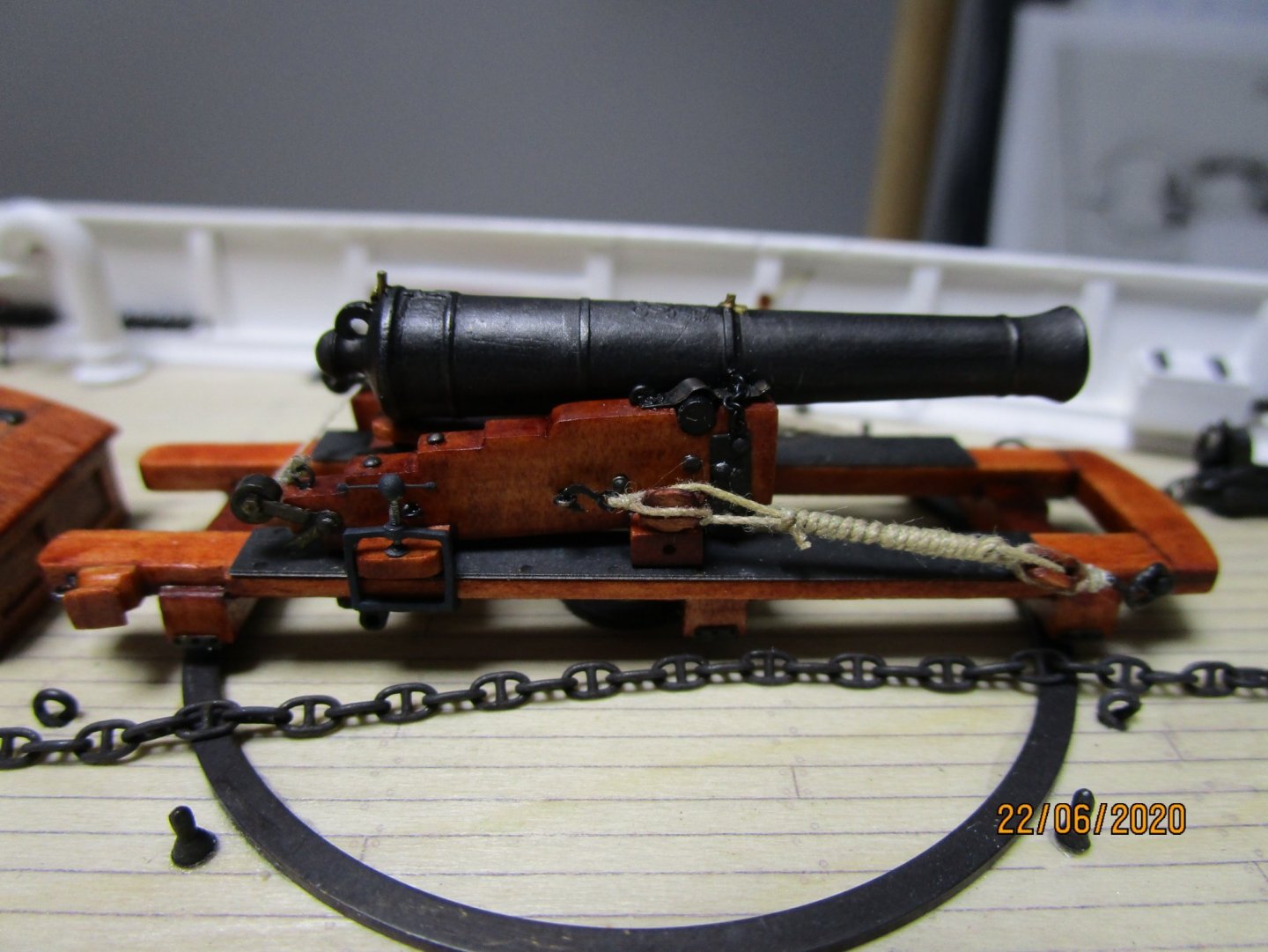-
Posts
5,937 -
Joined
-
Last visited
Content Type
Profiles
Forums
Gallery
Events
Everything posted by BANYAN
-

Divers Discover 2nd Century Military Ship off Egypt
BANYAN replied to Ian_Grant's topic in Nautical/Naval History
Thanks Grant, another great find. I wonder if/when someone will write a new book on the development/transition of building techniques based on this new evidence coming to light. With the many new finds in recent years, it would be great to see old texts updated to reflect the new material. (.... and no, I couldn't do it as I do not have the right skill set :)) I often wonder when I pick up an older reference book, whether some of the material needs an update. A simple check of te internet often is insufficient unless you know exactly where to look. Many of the sites where the info is stored requires paid subscription, and one can only afford to pay subscriptions a limited number of sites unfortunately. cheers Pat -
Hi Keith, purely from an 'ergonomic' point-of-view, getting in and out of the hatch, yet alone loading anything through it would have been problematic without removing the barrel of the windlass. With the barrel fitted, there would not have been much head/access room above it for about half the hatch opening as best I can see? Then as pointed out, the mechanics of the windlass are seriously affected by placing barrel axle higher up (leverage alone as the sailors were not very tall mostly). Filling the hatch is neither here-nor-there I think, as people did not have to step on it to work the windlass. The barrel could be rotated with longer staves a little further outboard from the centreline. Hope this clarifies, from my perspective at least, Keith? cheers Pat
-
Coming along really nicely Dave; very clean and crisp work. cheers Pat
- 143 replies
-
You select some very fascinating subjects to model Steven - missed the start, but it seems you have made a very good start. Any room left in the front row? cheers Pat
-
Hi Brian; wow! looks great. If it is only the edges of the planking in the cutaway area, I say go for it. As you say, it will highlight the area and differentiate between the planking and framing (which look in natural timber). cheers Pat
-
The suite of sails look great; good effort on perservering with the broken yards. If you are staying with the glue on method Steven, perhaps put some clear 'contact' over the template which will stop the glue sticking to the paper? cheers Pat
- 740 replies
-
- Tudor
- restoration
-
(and 4 more)
Tagged with:
-
Thanks Steven - awfully big matches you have (are they the BBQ long ones?) Seriously though, you are making great progress and those sails look great. cheers Pat
- 740 replies
-
- Tudor
- restoration
-
(and 4 more)
Tagged with:
-
Very nice joinery Dave; especially on those complicated joints. Are you using experience (eye balling) the cuts or using a jig? cheers Pat
- 143 replies
-
Nice work Steven. You should add a ruler to one of the shots to remind us just how small this work is. cheers Pat
- 740 replies
-
- Tudor
- restoration
-
(and 4 more)
Tagged with:
-
Some really nice 'bodging' there Greg. The added detail will look great when added and certainly show off the differences. cheers Pat
-
I'm late to the party again Greg. A very nice build of an interesting subject matter. How have you found working with resin? Appears you have had no probs at all. cheers Pat
- 53 replies
-
- photo etch
- resin
-
(and 3 more)
Tagged with:
-
Nice recovery and fix Steven, these frustrations are sometime so close to making you want to ..... cheers Pat
- 740 replies
-
- Tudor
- restoration
-
(and 4 more)
Tagged with:
-
That looks great Dave; the subtle trennels are very effective. cheers Pat
- 143 replies
-
Hi Rob, nice work on the detail; looks very effective. We used threads (soaked in PVA) for the scroll work; I'll be interested in seeing how you did it? cheers Pat
- 3,560 replies
-
- clipper
- hull model
-
(and 2 more)
Tagged with:
-
Hi George, I would have to agree with your deduction/assessment that a sliding hatch better conforms with the detail shown in the Admiralty Drawing. I can understand your apprehension, but I think these sliding hatches were used extensively and were constructed in such a way they did not jamb when operated. Also, while occupying additional deck space (horizontal plane), this may have been necessary to minimise height (vertical plane). This would be particularly important for operating the capstan etc where the bars needed to clear any obstructions; the flat (sliding) cover allows crew to walk on them. Not sure what equipment was in this area based on the cropped plans you show, but may need further consideration cheers Pat
-
I have found that once blackened and rinsed, immediately 'polishing' the parts with a soft cloth/paper towel (to remove the powdery residue) works wonders and I then have no issues with 'scale'. This leaves that nice iron grey finish Tim refers to. I have no issues with polishing even very fine parts by simply rolling/rubbing them in the cloth/paper. Allan, I prefer a nice juicy steak - I'll leave the snails for you cheers Pat
-
The completed (repaired) model will look great with her new suite of sails Steven, you are managing to add some significant detail while remaining true to your very early efforts. cheers Pat
- 740 replies
-
- Tudor
- restoration
-
(and 4 more)
Tagged with:
-
Hi Allan, just to be sure, the brass belfry (and bell) in the earlier photo are actually brass - the FW tank cock and breather pipe are painted. The following is the brass compass cover (dry fitted) on the binnacle and the EOT - this is the dulled look I was talking about. You can compare the colour against the watch bell which has been turned from brass. cheers Pat
-
Allan, the paints are both from Gunzo (Japanese): 1. The more silvery (with flake) is Mr. Metal GX201 - Metal Black 2. The canon is don with Mr. Color MC214 - Dark Iron If you intend using the former also, make sure to shake the bottle really well before decanting off a little for diluting. Both paints dry very rapidly so leaving the cap off will thicken them really quickly. The brass paint I use is also from the Mr. Color, I haven't got the code but there is only 1. I like it as it softens to a dirty brass (aged) look and can be hand painted (all Mr. Colour paint can be brushed or airbrushed, but the latter requires a little dilution with Mr. Paint thinner (get the right one for the right paint). I like to use Tamaya (spray can) undercoat. Hope this helps you? cheers Pat
-
Hi Allan, my mate is the expert in these matters - I simply do the research and he draws it up in 3D (Fusion I think), then he prints it. I sometimes provide a 2D CAD drawing that he uses as his start point (extrudes them), but he still needs to 'tweak them' for the details. This barrel was in grey resin, but he can do black - I just find it easier to view detail etc in grey. All the detail was printed, I simply painted it. I used an airbrush in order to get the overall even higher quality finish - I think I used Mr. Metal 'black iron' - there are two types one has larger 'flakes' in it which I used on the freshwater tank (see attached), the other I used on this barrel. I'll try to get the right product name and number for you if you wish). The details were hand brushed, again with Mr. Metal 'brass'. cheers Pat
-
Looks good Steven, and you handed me an 'English' lesson - had no idea what gestalt view [point] was, but am now the wiser - from the internet: Gestalt theory emphasizes that the whole of anything is greater than its parts. That is, the attributes of the whole are not deducible from analysis of the parts in isolation. The word Gestalt is used in modern German to mean the way a thing has been “placed,” or “put together.” cheers Pat
- 740 replies
-
- Tudor
- restoration
-
(and 4 more)
Tagged with:
-
Look good Allan and can only concur. A mate printed my 3D barrels for HMCSS Victoria using resin also, and they look good. Here is an example of a Blomefield pattern (c1847) - you can see the embossed cipher, dispart sight (forward) and Miller tangent sight abaft the breech: The gun barrel is about 1.5" long. cheers Pat (p.s. - the compressor (rear upper carriage transom) is also 3D resin printed - the bar part of the lever handle is only a few microns thick (less than 0.2 mm))
About us
Modelshipworld - Advancing Ship Modeling through Research
SSL Secured
Your security is important for us so this Website is SSL-Secured
NRG Mailing Address
Nautical Research Guild
237 South Lincoln Street
Westmont IL, 60559-1917
Model Ship World ® and the MSW logo are Registered Trademarks, and belong to the Nautical Research Guild (United States Patent and Trademark Office: No. 6,929,264 & No. 6,929,274, registered Dec. 20, 2022)
Helpful Links
About the NRG
If you enjoy building ship models that are historically accurate as well as beautiful, then The Nautical Research Guild (NRG) is just right for you.
The Guild is a non-profit educational organization whose mission is to “Advance Ship Modeling Through Research”. We provide support to our members in their efforts to raise the quality of their model ships.
The Nautical Research Guild has published our world-renowned quarterly magazine, The Nautical Research Journal, since 1955. The pages of the Journal are full of articles by accomplished ship modelers who show you how they create those exquisite details on their models, and by maritime historians who show you the correct details to build. The Journal is available in both print and digital editions. Go to the NRG web site (www.thenrg.org) to download a complimentary digital copy of the Journal. The NRG also publishes plan sets, books and compilations of back issues of the Journal and the former Ships in Scale and Model Ship Builder magazines.






